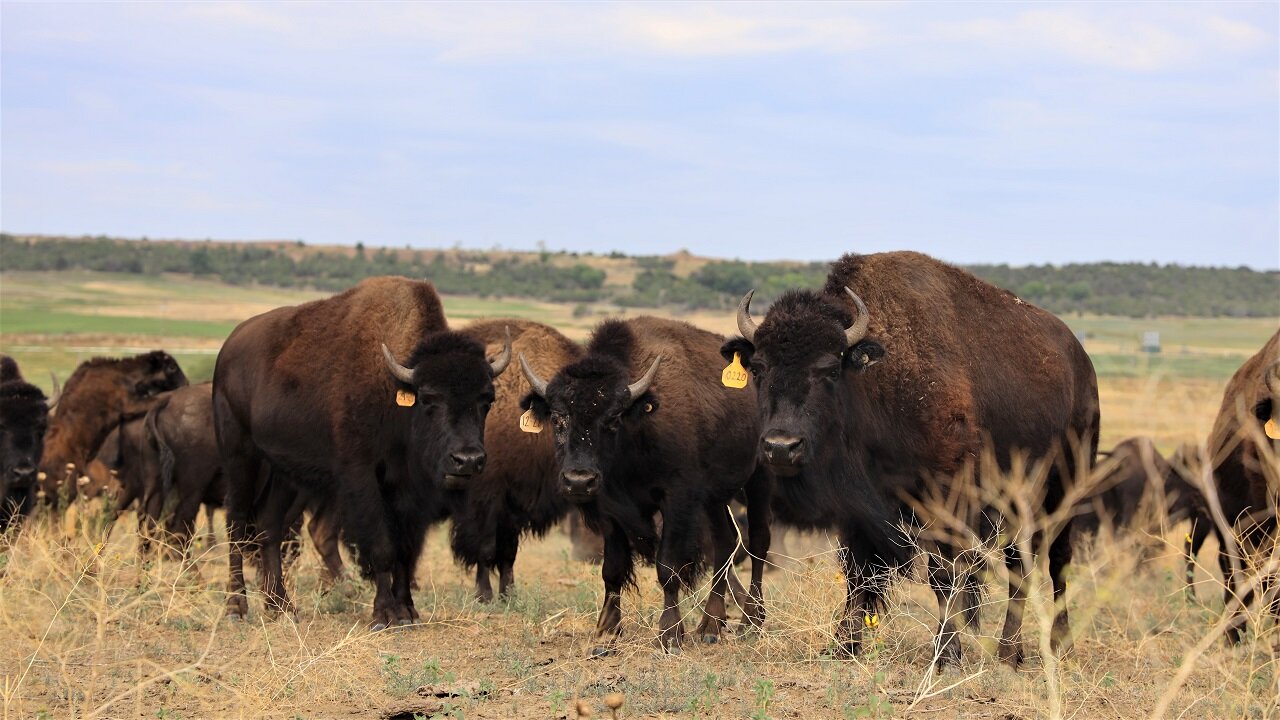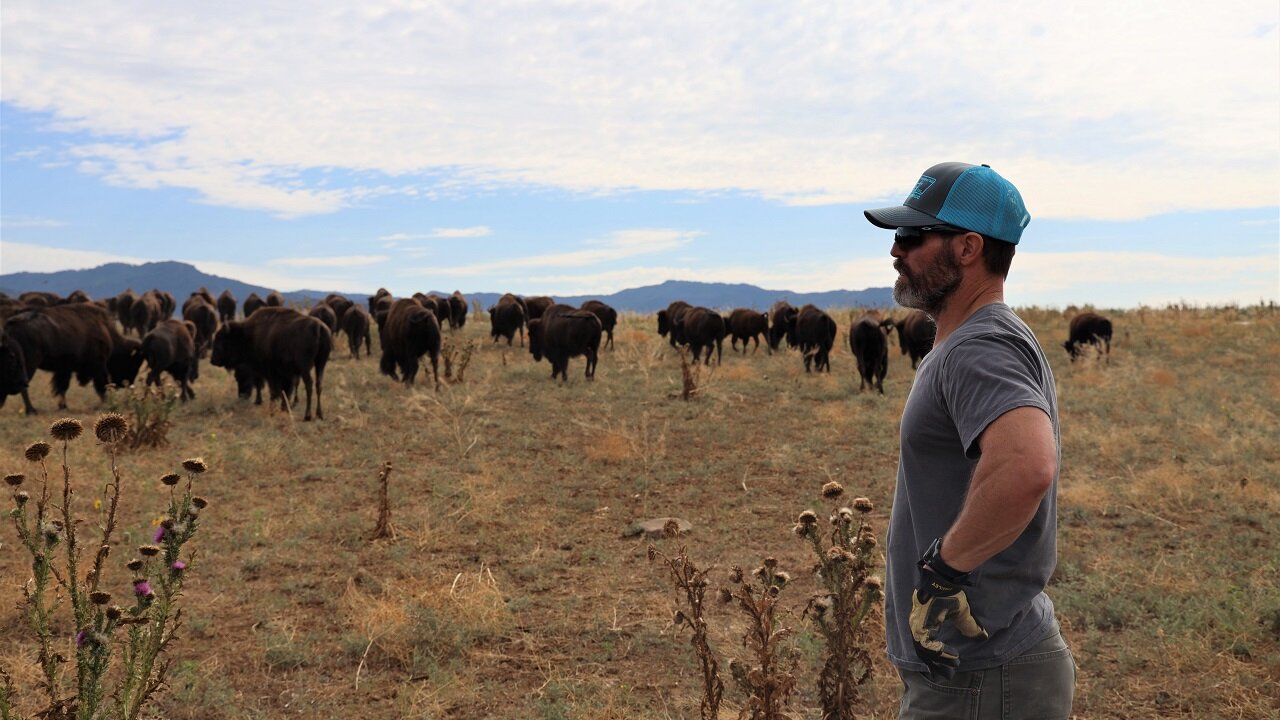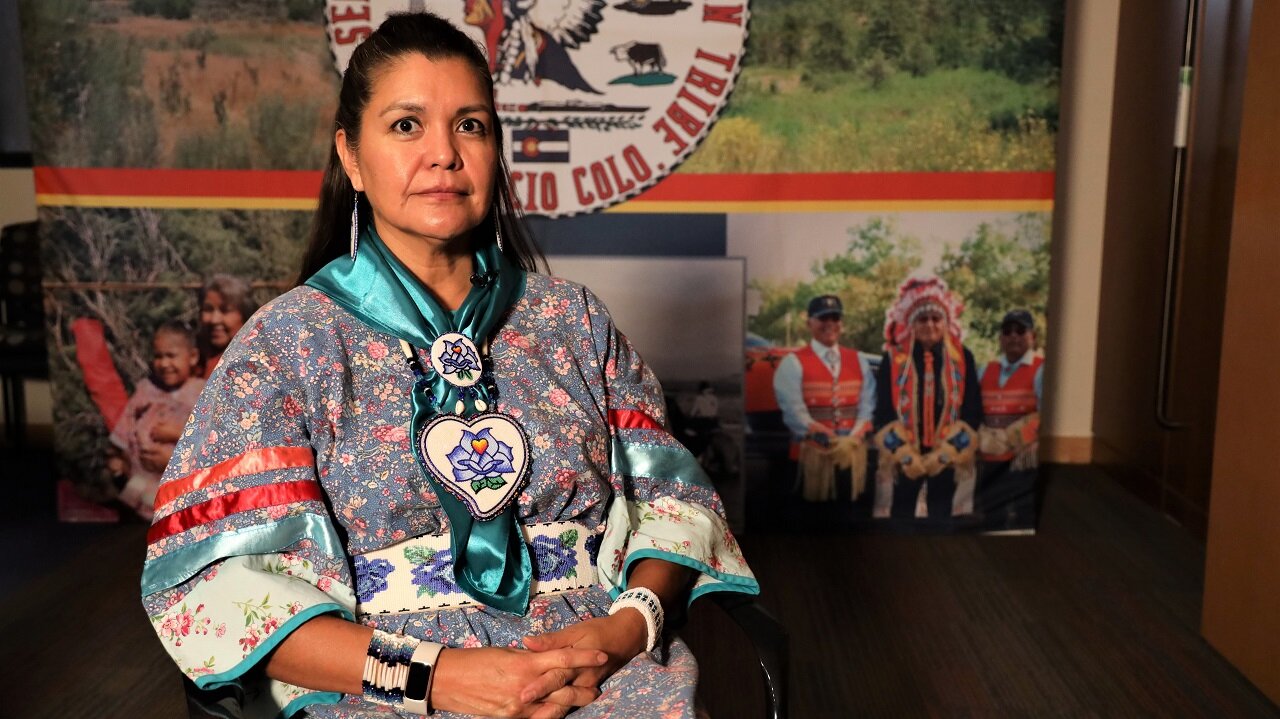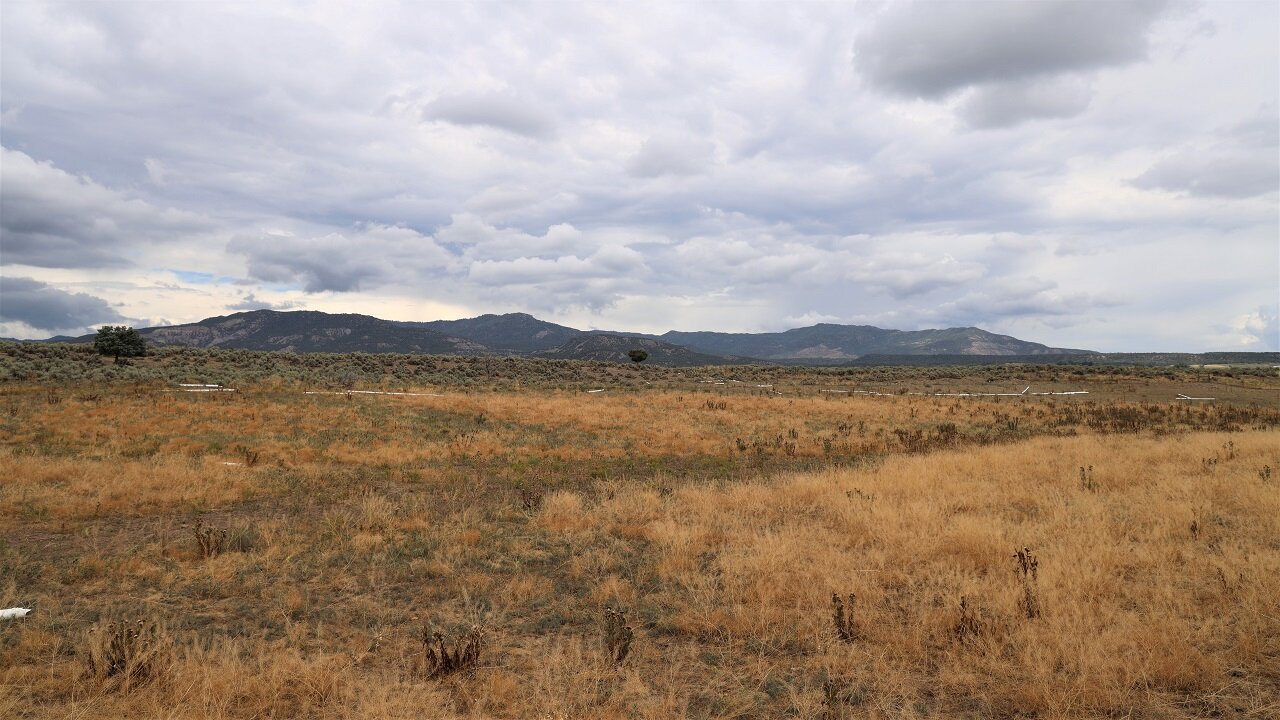Southern Ute Tribe’s bison herd at maximum capacity due to environmental restrictions

This article is part of ongoing reporting and production for a new episode of Colorado Experience called “Return of the Buffalo”. Part 1 is set to premiere October 12 at 7 p.m. on Rocky Mountain PBS.
IGNACIO, Colo. — Traveling along a dirt road outside of Ignacio, drivers can see miles and miles of ranch land with herds of cows and horses populating the rolling landscape. From a distance, a group of 115 animals looks like just another cow herd. A closer look reveals they are our national mammal: bison.
“As a Native American, having buffalo back on our landscape to help keep our earth healthy and also to have that traditional source of lean protein is really empowering,” explained Stacey Oberly, a Southern Ute Tribal Council Member.
Oberly is also the tribal council’s representative on the InterTribal Buffalo Council (ITBC) which is a collective of 80 different tribes with buffalo herds across the country. Oberly is a strong proponent of preserving Ute culture and language as she earned a master’s degree in multilingual education and a doctorate in linguistics. Her advocacy includes the buffalo herd on Southern Ute land.
“It's not just some creature out there. It's a part of our family, is a part of our spiritual tradition. It's super important,” said Oberly.

The buffalo herd roams within the fences unbothered by people for 364 days a year. Once a year they are put into a corral for medical exams.
The herd comprises 115 bison. Most of the animals are female, which helps control the population size. They live on 350 acres of land, just over half of a square mile. About a third of that land is set aside for growing hay for the bison to eat during the winter.
Typically, buffalo have no problem finding food and water in the winter. They will eat the snow as a source of water and will use their large heads and shoulders to burrow through the snow and eat the grasses below. But what if there is no grass underneath?
Southwestern Colorado, where the Southern Ute Indian Reservation is located, has experienced a drought for most of the last two decades, according to the Southwestern Water Conservation District. While the Front Range and Eastern Colorado recorded an unusually wet spring and summer this year, Southwestern Colorado did not. The region is still considered abnormally dry or experiencing moderate drought based on the latest drought monitor map.
Much of the water that comes to this land flows from the snow melt in the San Juan Mountain Range. Even so, irrigation is a necessity for the buffalo herd’s land.

Jesse Lasater watches over the Southern Ute's herd that he has helped grow from 31 bison to 115.
“Without irrigation, we're not able to grow the crops and the hay and be able to feed the bison during the year or in the winter,” said Jesse Lasater, the bison herd manager for The Southern Ute Indian Tribe.
Lasater’s job can be summed up in a short phrase: “keep the herd happy, healthy and inside the fences.” The reality is he does a little bit of everything to maintain the herd. Lasater started managing the herd in 2015 when there were only 31 bison. Through his work and collaboration with other organizations like ITBC, The Tribe has grown the herd to its current size and fulfilled the goal of supplying the bison meat distribution program.
By harvesting about 15 buffalo a year, the program is able to provide up to five pounds of free bison meat to each Southern Ute Tribal member household each month. The program reintroduces an important part of the Ute diet and way of life.
“One of the main reasons [to return buffalo to tribal lands] is to help restore our food sovereignty and our traditional food system,” Oberly explained.
The Utes lived across large parts of Colorado and what are now neighboring states. Oberly said the Utes didn’t start hunting bison more regularly until the Spanish introduced horses to the Utes in the 16th century. After that, the buffalo became part of the regular food system and was used for numerous tools, clothing and tipis. Buffalo also play an important spiritual role for the Utes.

Stacey Oberly is a Southern Ute Tribal Council Member and the representative for The Southern Ute Indian Tribe with the InterTribal Buffalo Council.
“A huge part of our ceremonial life is our Southern Ute Sundance, which happens every summer, and buffalo are very important for that ceremony,” said Oberly. “They're a symbol of strength, not only physical strength, but also spiritual strength and endurance. And to us, they're very sacred.”
Oberly also notes the immense benefit buffalo provide to the ecosystem. From the ground up, the animals play an important role in North America’s grasslands. Their hooves stir the soil to help bury seeds; they way they eat grass replenishes it; they roll around in the dirt, creating wallows so that when it rains there are more water holes for other animals to drink from; their fur allows birds to build warmer and safer nests. The list goes on. These are just a few reasons why Oberly believes everyone should be invested in helping return the bison to the grasslands.
“We're starting to learn what bad health our ecosystem is [in] and putting the bison back into our natural ecosystems will benefit all of us and the earth as well,” said Oberly.

The Southern Ute bison herd has 350 acres of land designated to it but one third of the land is set aside to grow food for the herd during the winter.
For The Southern Ute Indian Tribe, expanding the herd isn’t possible right now. Too much of the land designated for the herd is being used to grow food and the consistent drought brought on by a changing climate can leave non-irrigated parts of the land barren. The Environmental Protection Agency reports that snowpack in the West has decreased since the 1950s, and the amount of snowpack measured in April has declined by 20 to 60 percent at most monitoring sites in Colorado.
As Lasater knows all too well, you cannot reintroduce more bison without more consistent water in the southwestern part of the state.
“So if we don't have a great winter, we suffer in the summer and then … the animals then suffer for the next year because of a lack of hay, usually hay prices go up. Some people cut their herd numbers and there's a number of ways to work around it. But yeah, you're always dealing with Mother Nature and the weather,” Lasater explained.
As the demand for more water from the Colorado River basin becomes increasingly dire, Lasater and Oberly are focused on maintaining the herd’s current numbers, with the hope that someday, more buffalo can come home.

Amanda Horvath is the managing producer at Rocky Mountain PBS. You can reach her at amandahorvath@rmpbs.org